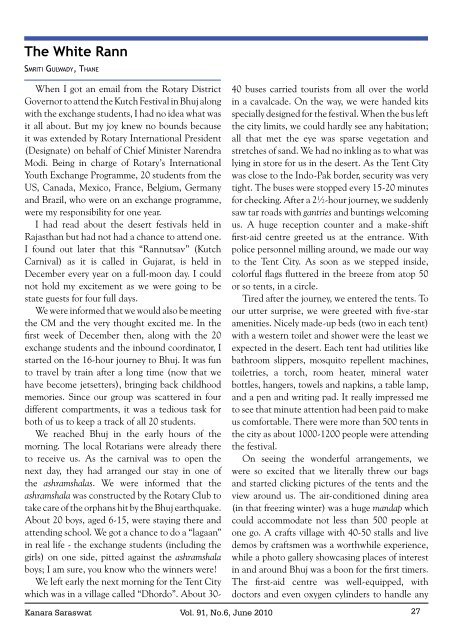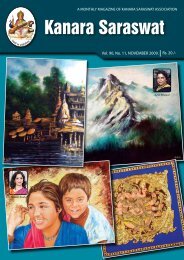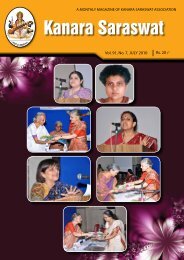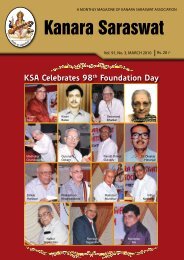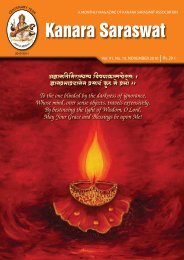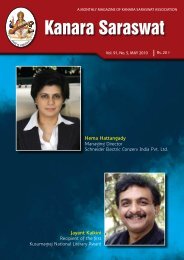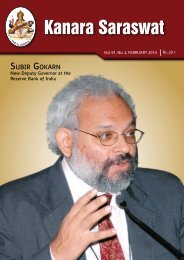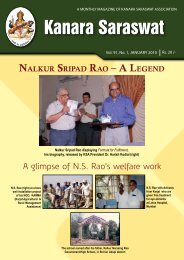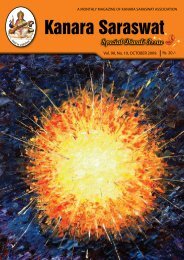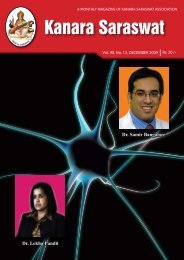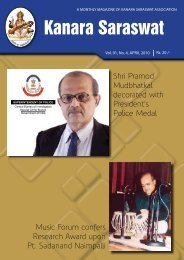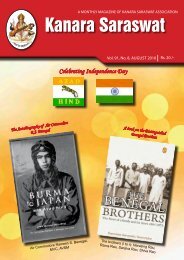Magazine of June - 2010 - Rups.net
Magazine of June - 2010 - Rups.net
Magazine of June - 2010 - Rups.net
- No tags were found...
Create successful ePaper yourself
Turn your PDF publications into a flip-book with our unique Google optimized e-Paper software.
The White RannSm r i t i Gu lw a d y , Th a n eWhen I got an email from the Rotary DistrictGovernor to attend the Kutch Festival in Bhuj alongwith the exchange students, I had no idea what wasit all about. But my joy knew no bounds becauseit was extended by Rotary International President(Designate) on behalf <strong>of</strong> Chief Minister NarendraModi. Being in charge <strong>of</strong> Rotary’s InternationalYouth Exchange Programme, 20 students from theUS, Canada, Mexico, France, Belgium, Germanyand Brazil, who were on an exchange programme,were my responsibility for one year.I had read about the desert festivals held inRajasthan but had not had a chance to attend one.I found out later that this “Rannutsav” (KutchCarnival) as it is called in Gujarat, is held inDecember every year on a full-moon day. I couldnot hold my excitement as we were going to bestate guests for four full days.We were informed that we would also be meetingthe CM and the very thought excited me. In thefirst week <strong>of</strong> December then, along with the 20exchange students and the inbound coordinator, Istarted on the 16-hour journey to Bhuj. It was funto travel by train after a long time (now that wehave become jetsetters), bringing back childhoodmemories. Since our group was scattered in fourdifferent compartments, it was a tedious task forboth <strong>of</strong> us to keep a track <strong>of</strong> all 20 students.We reached Bhuj in the early hours <strong>of</strong> themorning. The local Rotarians were already thereto receive us. As the carnival was to open thenext day, they had arranged our stay in one <strong>of</strong>the ashramshalas. We were informed that theashramshala was constructed by the Rotary Club totake care <strong>of</strong> the orphans hit by the Bhuj earthquake.About 20 boys, aged 6-15, were staying there andattending school. We got a chance to do a “lagaan”in real life - the exchange students (including thegirls) on one side, pitted against the ashramshalaboys; I am sure, you know who the winners were!We left early the next morning for the Tent Citywhich was in a village called “Dhordo”. About 30-40 buses carried tourists from all over the worldin a cavalcade. On the way, we were handed kitsspecially designed for the festival. When the bus leftthe city limits, we could hardly see any habitation;all that met the eye was sparse vegetation andstretches <strong>of</strong> sand. We had no inkling as to what waslying in store for us in the desert. As the Tent Citywas close to the Indo-Pak border, security was verytight. The buses were stopped every 15-20 minutesfor checking. After a 2½-hour journey, we suddenlysaw tar roads with gantries and buntings welcomingus. A huge reception counter and a make-shiftfirst-aid centre greeted us at the entrance. Withpolice personnel milling around, we made our wayto the Tent City. As soon as we stepped inside,colorful flags fluttered in the breeze from atop 50or so tents, in a circle.Tired after the journey, we entered the tents. Toour utter surprise, we were greeted with five-staramenities. Nicely made-up beds (two in each tent)with a western toilet and shower were the least weexpected in the desert. Each tent had utilities likebathroom slippers, mosquito repellent machines,toiletries, a torch, room heater, mineral waterbottles, hangers, towels and napkins, a table lamp,and a pen and writing pad. It really impressed meto see that minute attention had been paid to makeus comfortable. There were more than 500 tents inthe city as about 1000-1200 people were attendingthe festival.On seeing the wonderful arrangements, wewere so excited that we literally threw our bagsand started clicking pictures <strong>of</strong> the tents and theview around us. The air-conditioned dining area(in that freezing winter) was a huge mandap whichcould accommodate not less than 500 people atone go. A crafts village with 40-50 stalls and livedemos by craftsmen was a worthwhile experience,while a photo gallery showcasing places <strong>of</strong> interestin and around Bhuj was a boon for the first timers.The first-aid centre was well-equipped, withdoctors and even oxygen cylinders to handle anyKanara Saraswat Vol. 91, No.6, <strong>June</strong> <strong>2010</strong> 27


